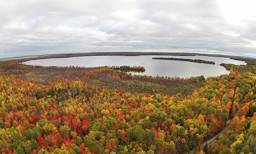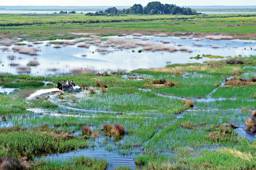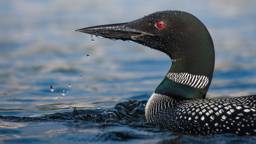That lake looks so pristine. That river seems so calm. But underneath those beautiful expanses of blue water, the invasion has begun.
Invasive animal species are marching across the U.S., and cabin lovers have had enough. The battle is on, and if you’re looking to join the fight, here’s some info you need about the enemies you’ll be facing.
Asian Carp
If on some sunny day, a 30-pound fish leaps from the water and hits you in your boat, count yourself lucky if you only get bruised.
Silver carp have knocked boaters out cold and broken bones. Since 1980, when this species of Asian carp escaped from fish farms in the southern U.S., they’ve been harming people, as well as native plant and animal communities. And now they’re invading your wallet. After the Carp Summit at the White House earlier this year, federal officials announced a $78.5 million plan to keep Asian carp out of Lake Michigan.
Nutria
Nutria are only slightly more pleasant than colossal carp. These super-sized water rodents with orange (yes, orange) buckteeth have chewed through tens of thousands of acres of North American wetlands at a rate of approximately 25 percent of their weight daily. Their burrowing and gnawing accelerates shoreland property erosion.
Nutria scurried away from furriers’ cages in the 1930s. Some people think the 20-pound mega-rats from South America make lovely pets, some like them grilled (yes, some people eat them), but most view them as noxious pests.
Mussels
Small creatures like mussels and snails can also be horrible. Zebra and quagga mussels, in particular, have whipped up their share of dread and loathing in areas where they have proliferated to ecologically and economically damaging levels.
Unlike Asian carp and nutria that at one time were welcomed, the invasive mussels were not on the North American guest list. They are thought to have accidentally traveled from the Black Sea area of Eurasia to the Great Lakes in the ballast tanks of ships, costing millions of dollars, and costing the local aquatic ecosystems in which they have madly multiplied even more.
Invasive animal species are marching across the U.S., and cabin lovers have had enough. The battle is on, and if you’re looking to join the fight, here’s some info you need about the enemies you’ll be facing.
Asian Carp
If on some sunny day, a 30-pound fish leaps from the water and hits you in your boat, count yourself lucky if you only get bruised.
Silver carp have knocked boaters out cold and broken bones. Since 1980, when this species of Asian carp escaped from fish farms in the southern U.S., they’ve been harming people, as well as native plant and animal communities. And now they’re invading your wallet. After the Carp Summit at the White House earlier this year, federal officials announced a $78.5 million plan to keep Asian carp out of Lake Michigan.
Nutria
Nutria are only slightly more pleasant than colossal carp. These super-sized water rodents with orange (yes, orange) buckteeth have chewed through tens of thousands of acres of North American wetlands at a rate of approximately 25 percent of their weight daily. Their burrowing and gnawing accelerates shoreland property erosion.
Nutria scurried away from furriers’ cages in the 1930s. Some people think the 20-pound mega-rats from South America make lovely pets, some like them grilled (yes, some people eat them), but most view them as noxious pests.
Mussels
Small creatures like mussels and snails can also be horrible. Zebra and quagga mussels, in particular, have whipped up their share of dread and loathing in areas where they have proliferated to ecologically and economically damaging levels.
Unlike Asian carp and nutria that at one time were welcomed, the invasive mussels were not on the North American guest list. They are thought to have accidentally traveled from the Black Sea area of Eurasia to the Great Lakes in the ballast tanks of ships, costing millions of dollars, and costing the local aquatic ecosystems in which they have madly multiplied even more.
Behaving Badly? Behaving Naturally
“Aquatic invasive species aren’t necessarily behaving badly,” said Doug Jensen, the aquatic invasive species program coordinator for the University of Minnesota Sea Grant Program. “They’re behaving naturally in environments where they are freer from their usual predators and competitors. The economic and environmental damage they cause when they get into a new waterway is a problem, however. That’s where people’s behavior can make a difference. Every boater’s mantra should be: Inspect, clean, drain.”
Jensen and other invasive species experts know that shoreland owners can help prevent the spread of aquatic invasive species by adopting clean boating practices and by educating neighbors, friends and other water lovers to do the same. Many potentially invasive species can hitchhike on boats and gear. Since it is nearly impossible to get rid of these species once they invade a lake or river, it’s essential that people take an extra moment to ensure their boats and gear are free of hitchhiking animals and plants.
They say you should know your enemy. Well, now you know.
Sharon Moen is a science writer for the University of Minnesota Sea Grant Program. She didn’t write about spiny waterfleas here but she wants to stop their invasion of the sparkling lakes of the Boundary Waters Canoe Area. Badly!
“Aquatic invasive species aren’t necessarily behaving badly,” said Doug Jensen, the aquatic invasive species program coordinator for the University of Minnesota Sea Grant Program. “They’re behaving naturally in environments where they are freer from their usual predators and competitors. The economic and environmental damage they cause when they get into a new waterway is a problem, however. That’s where people’s behavior can make a difference. Every boater’s mantra should be: Inspect, clean, drain.”
Jensen and other invasive species experts know that shoreland owners can help prevent the spread of aquatic invasive species by adopting clean boating practices and by educating neighbors, friends and other water lovers to do the same. Many potentially invasive species can hitchhike on boats and gear. Since it is nearly impossible to get rid of these species once they invade a lake or river, it’s essential that people take an extra moment to ensure their boats and gear are free of hitchhiking animals and plants.
They say you should know your enemy. Well, now you know.
Sharon Moen is a science writer for the University of Minnesota Sea Grant Program. She didn’t write about spiny waterfleas here but she wants to stop their invasion of the sparkling lakes of the Boundary Waters Canoe Area. Badly!
Before launching … before leaving:
• Remove aquatic plants, fish, animals and mud from boat, motor, trailer and equipment.
• Drain water from boat, motor, bilge, livewell and bait buckets.
• Dispose of unwanted live bait, fish parts and worms in the trash.
• Rinse boat and equipment with high pressure, hot (120 degrees or higher) water either on your way home or at home, and let everything dry for at least five days.
• Remove aquatic plants, fish, animals and mud from boat, motor, trailer and equipment.
• Drain water from boat, motor, bilge, livewell and bait buckets.
• Dispose of unwanted live bait, fish parts and worms in the trash.
• Rinse boat and equipment with high pressure, hot (120 degrees or higher) water either on your way home or at home, and let everything dry for at least five days.
Something’s Fishy Around Here
Researchers in Australia have manipulated carp DNA so that the fish carrying the modified gene produce only male offspring. The possible benefits of The Daughterless Carp Project have warranted its further development. Experts from throughout the world met in Minneapolis, Minn., in June to discuss managing invasive fish with genetically modified organisms. Meanwhile, carp continue to trouble North America waterways.
Common carp are now so common that they are sometimes considered part of the native fish community. However, most anglers and duck hunters think lakes and rivers would be better off without them. The Asian carp are a flying leap away from Lake Michigan. And grass carp – imported to control aquatic vegetation in aquaculture ponds – have spread rapidly since the 1970s through accidental and intentional releases.
Researchers in Australia have manipulated carp DNA so that the fish carrying the modified gene produce only male offspring. The possible benefits of The Daughterless Carp Project have warranted its further development. Experts from throughout the world met in Minneapolis, Minn., in June to discuss managing invasive fish with genetically modified organisms. Meanwhile, carp continue to trouble North America waterways.
Common carp are now so common that they are sometimes considered part of the native fish community. However, most anglers and duck hunters think lakes and rivers would be better off without them. The Asian carp are a flying leap away from Lake Michigan. And grass carp – imported to control aquatic vegetation in aquaculture ponds – have spread rapidly since the 1970s through accidental and intentional releases.
Shell Games
Zebra and quagga mussels, New Zealand mudsnails, and a variety of freshwater snails are infesting lakes and rivers in North America. These invaders have been linked to anoxia (a total decrease in the level of oxygen), waterfowl die-offs, and food web changes that impact fisheries.
Zebra and quagga mussels, New Zealand mudsnails, and a variety of freshwater snails are infesting lakes and rivers in North America. These invaders have been linked to anoxia (a total decrease in the level of oxygen), waterfowl die-offs, and food web changes that impact fisheries.




 Jason L. Jenkins
Jason L. Jenkins 

 U of M Sea Grant Program
U of M Sea Grant Program 









